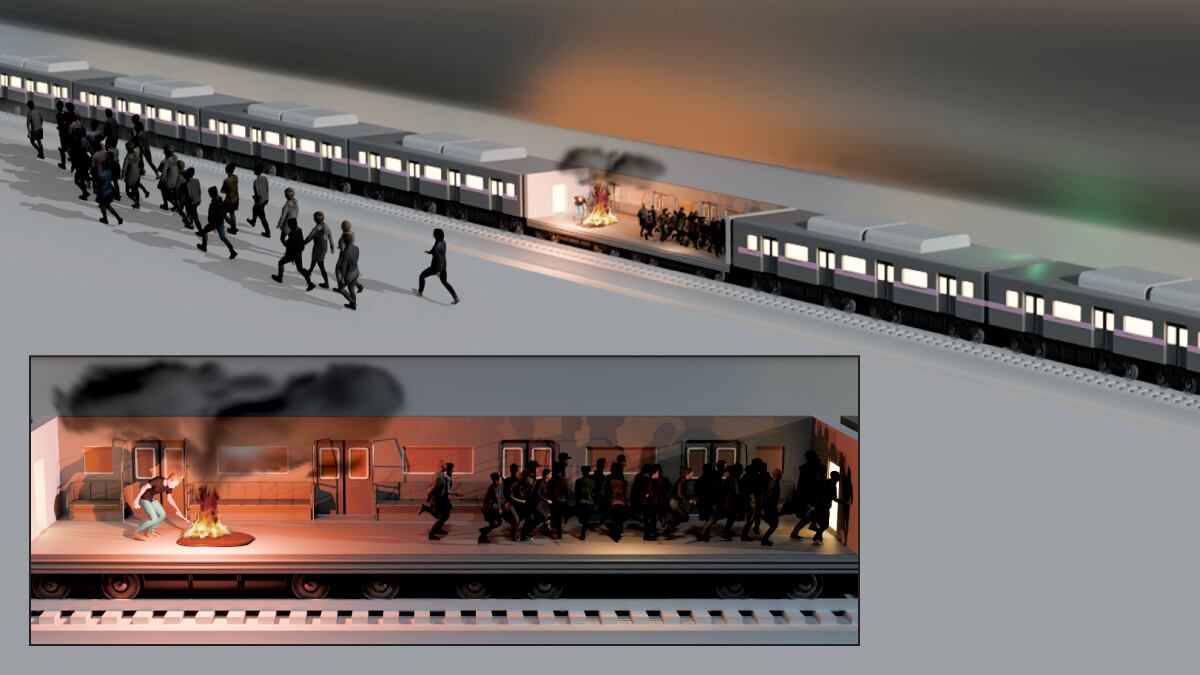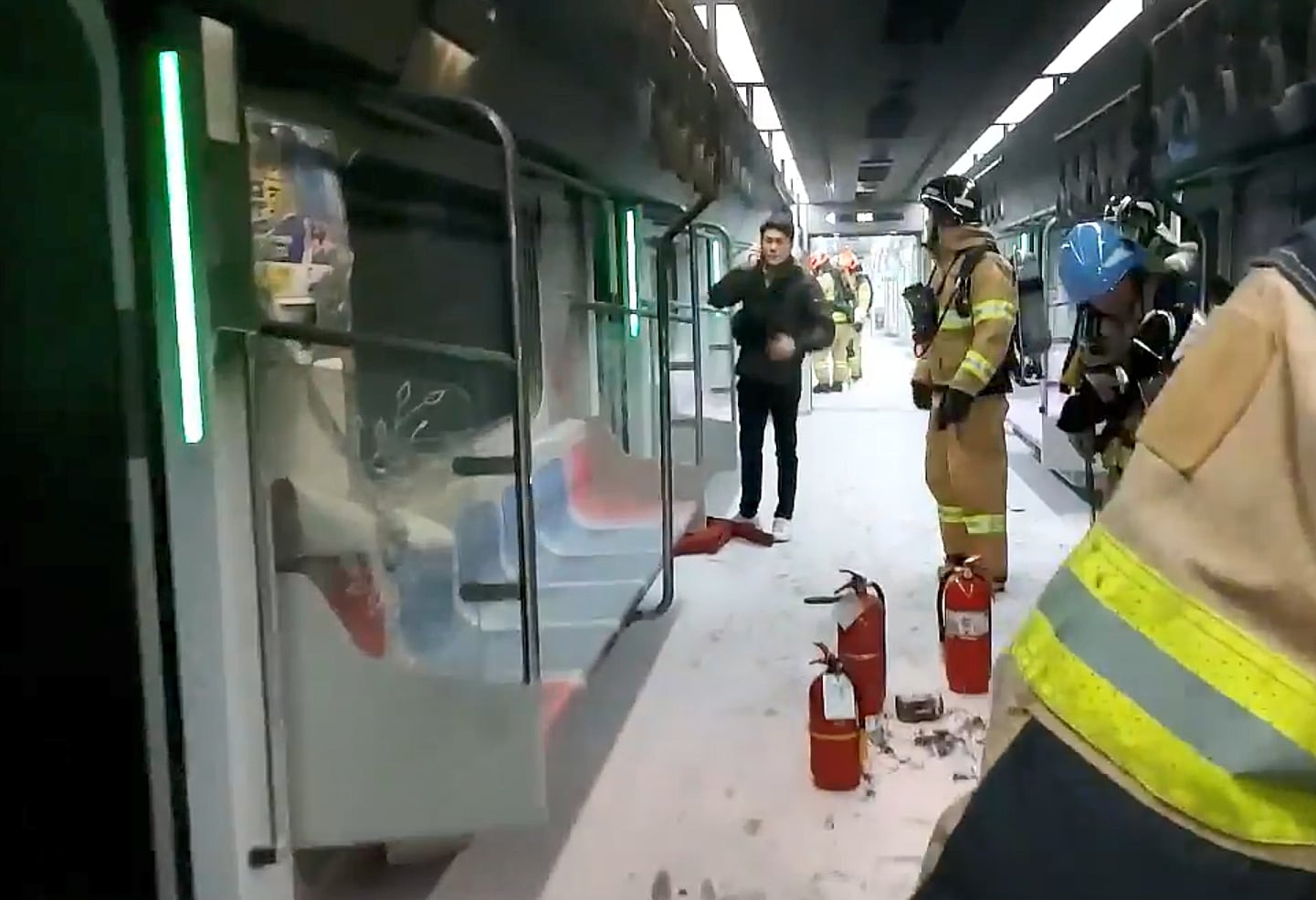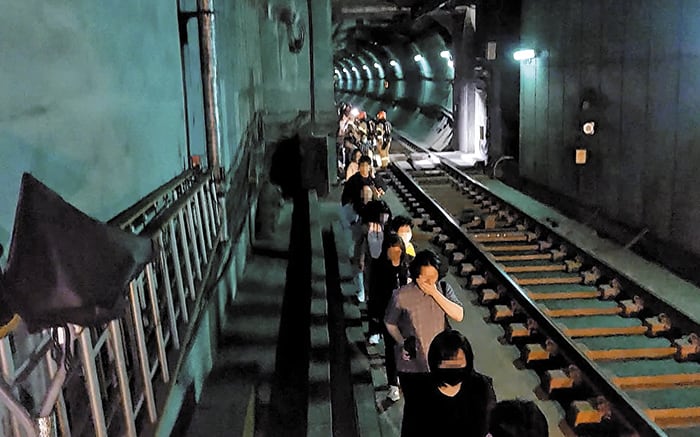On the morning of May 31, when a fire erupted inside a subway car in Seoul, it had the potential to turn into one of South Korea’s most catastrophic public transportation incidents. However, despite being intentionally started by a rider, the blaze was swiftly brought under control. No lives were lost as a result. While twenty-three individuals received treatment for smoke inhalation, everyone managed to survive.
It was, as safety experts subsequently pointed out, a near miss—a "close replica" of the 2003 Daegu subway fire incident that claimed 192 lives and led to extensive safety overhauls. They argue that this time around, the result differed due to improved materials, enhanced procedures, and a more knowledgeable populace—all outcomes influenced by the insights gained from that disaster.

Over the past 22 years since the incident in Daegu, the South Korean government along with various municipal authorities has allocated over 340 billion won ($250 million) for enhancing subway safety measures. The trains were upgraded with non-flammable and flame-resistant materials—upgrades that probably helped save lives during the events of last week.
The incident started when a man in his 60s ignited gasoline he had spilled inside the fourth carriage of Seoul Metro Line 5, leading to immediate flames and rapid smoke accumulation within the train compartment, as reported by witnesses. However, the fire did not escalate further. This was due to the seating being constructed from polycarbonate—a material also found in motorcycle helmets and sturdy suitcases—while the flooring was covered with flame-resistant synthetic rubber.
On the contrary, the 2003 Daegu subway vehicles had extremely combustible interiors, featuring walls made from polyurethane foam and flooring coated with vinyl that caught fire rapidly, generating dense, poisonous fumes. Of the 192 fatalities, the majority succumbed to suffocation. The train operator abandoned his post without notifying central command, and many travelers lacked knowledge about emergency evacuation procedures.

On this occasion, the reply adhered to a distinct protocol — an established routine practiced for decades.
The moment the fire started, passengers contacted the conductor through the emergency intercom system. Surveillance footage within the train verified what was happening. Following the procedures set by the Seoul Metro, the conductor informed the control center and made an announcement asking travelers to relocate to another car. Subsequently, he hurried towards the blazing compartment where he joined multiple passengers in using fire extinguishers to combat the blaze.
The control center promptly halted all approaching trains, enabling passengers to exit safely via the tunnel. According to a statement from a Seoul Metro representative, the train operator had undergone a fire drillsimulation exactly one month prior, on April 29, which strikingly mirrored the actual crisis situation.
The Seoul Metro carries out such drills every three to four months. Investigators reported that the conductor stated following the incident: "I was frightened I could suffocate, but as soon as I verified the fire myself, I took an extinguisher and rushed over."
Lee Chang-woo, a professor from the Department of Fire and Disaster Prevention at Korea Soongsil Cyber University, mentioned regarding the Daegu fire incident, "The sole directive provided was for people to adhere to instructions from the control center in case of a fire. Since there wasn’t a comprehensive guide available, panic ensued amidst the confusion."

Passengers also played a crucial role. Upon spotting the fire, many utilized the emergency call systems within the train cars to alert authorities about the situation. Some activated the red-colored emergency door releases beneath their seats to open the doors for evacuation purposes. As reported by Seoul Metro, over 60 percent of the train’s total 64 doors were manually opened by passengers themselves.
A few people carried elderly passengers on their backs to safety. Some stayed back to assist in putting out the fire even as they dealt with the thick smoke. A representative from the fire department commented afterwards, "When our teams got there, we found no active fires remaining — the passengers and the conductor had taken care of it."
The difference compared to Daegu is quite pronounced. In 2003, despite having fire extinguishers and manual door levers available, most passengers did not know how—or lacked the time—to utilize these resources. The majority of casualties were discovered stacked up close to the doors that remained closed.
Improvements have been made in emergency communication systems as well. Following the incident in Daegu, the Seoul Metro implemented a new system capable of sending urgent intercom messages simultaneously to both the train operator and the control center. This enhancement facilitated a rapid reaction on May 31st.
Nevertheless, safety professionals advise remaining vigilant. Despite demonstrating that the system functioned correctly on May 31, they emphasize that accessing train doors and tunnel areas without adequate guidance poses significant risks.
On February 18, 2003, a man started a fire aboard a train halted at Jungangno Station in Daegu. This blaze rapidly spread to an additional train entering the same station. Following this disaster, legislation was enacted known as the Framework Act on Disaster and Safety Management, along with the formation of the National Emergency Management Agency.

Posting Komentar